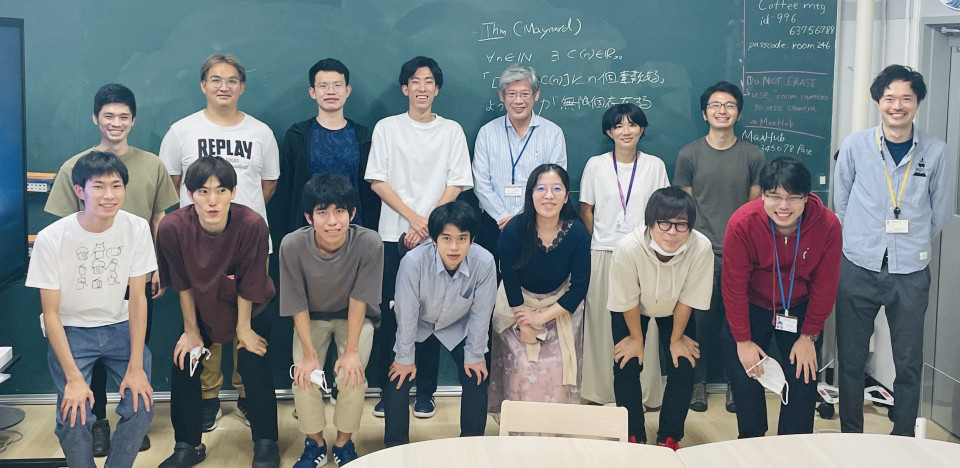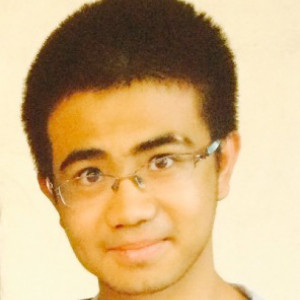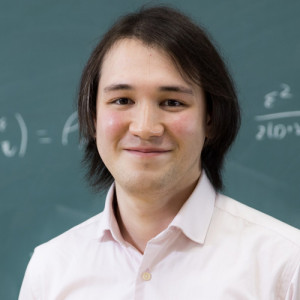Volume 219
Back to Newsletter List
Hot Topic
MACS-iTHEMS Study Group Members visited Wako on September 20-21, 2022
2022-10-06
MACS Program in the Faculty of Science, Kyoto Univ. has several Study Groups (SG) and one of them is the MACS-iTHEMS SG. In 2022, Ryosuke Iritani and Jeffery Fawcett from iTHEMS are actively participating in this MACS-iTHEMS SG and interacting with the students in Kyoto Univ.
On Sep.20 and 21, nine students (including undergraduate and graduate students in various fields at Kyoto Univ.) together with three faculty members (Kobayashi san, Tomida san and Itami san) from MACS Program visited RIKEN Wako Campus.
On the afternoon of Sep.20, they visited Enoto lab. to learn Enoto san's thundercloud project and NinjaSat project. Then they moved to CBS to see Brain Box exhibition. After that, they had a scientific session to explain their own research to each other at the iTHEMS common room.
On the morning of Sep.21, after a brief introduction to the iTHEMS activities and facilities, they had a tour of the gigantic accelerator complex (RIBF) in Nishina Center. On the afternoon of the same day, they visited the Chemical Biology Lab. in CSRS, followed by a visit to Toyoizumi Lab. in CBS to attend Toyoizumi san's lecture on neural learning theory.
It was a very stimulating and intensive program for the students. In particular, the Scientific Session on the afternoon of September 20, from 5:00 to 8:30 p.m., featured lively questions and discussions between RIKEN researchers and students.
We will continue this program and visit in the coming years.
- MACS Program in the Faculty of Science, Kyoto University (in Japanese)
- MACS-iTHEMS SG (in Japanese)
- Extreme Natural Phenomena RIKEN Hakubi Research Team (Enoto Laboratory)
- RIKEN CBS Brain Box
- Facilities at the RIBF | RIKEN Nishina Center
- Center for Sustainable Resource Science (CSRS) | RIKEN
- Taro Toyoizumi, Neural Computation and Adaptation |RIKEN Center for Brain Science (RIKEN CBS)
Upcoming Events
Seminar
iTHEMS Seminar
Isometric tensor networks in two dimension
October 11 (Tue) 10:30 - 12:00, 2022
Yantao Wu (Postdoctoral Researcher, RIKEN Interdisciplinary Theoretical and Mathematical Sciences Program (iTHEMS))
In this talk, I would like to explain the ansatz of isometric tensor network states (isoTNS) as candidate wavefunctions in two-dimensional condensed matter systems. I will explain how the isometric structure in 2D helps generalize many 1D tensor network algorithms, like the density matrix renormalization group and the time-evolution block decimation methods, to two dimensions. Both bosons and fermions; ground states and dynamics will be discussed. I will also explain why it is a friendly trial wavefunction in the context of variational Monte Carlo, where the sampling correlation time vanishes. I will also explain its relation to quantum error correction and how it provides an interesting playground of quantum information. If time permits, I would like to discuss some open questions about its representability of topological phases.
Venue: Common Room #246-248, 2F Main Research Building, RIKEN / via Zoom
Event Official Language: English
Seminar
iTHEMS Theoretical Physics Seminar
Ultra-Light Axion Dark Matter: Bose-Einstein condensates and superfluids in the sky
October 11 (Tue) 13:30 - 15:00, 2022
Elisa G.M. Ferreira (Project Assistant Professor, Kavli Institute for the Physics and Mathematics of the Universe (Kavli IPMU), The University of Tokyo)
The nature of dark matter (DM) is one of the biggest mysteries in cosmology. There are many different models to explain the nature of this elusive component. In this talk I will present a class of dark matter models: ultra-light dark matter (ULDM) or ultra-light axions (ULA). I will show the different models present in the literature and classify them according to the way they behave on small scales. One of the most interesting features of this class of DM models is that it might condense in the interior of the halos of galaxies forming a Bose-Einstein condensate (BEC) or superfluid. This interesting quantum phenomena on macroscopic scales, and the wave nature of ULDM leads to different and interesting astrophysical consequences that can be probed on small scales. I will quickly review first the fuzzy dark matter model, one of the most well studied ULA models, where I will present its description, predictions and current bounds. Then I will introduce the DM superfluid model, where, upon condensation in the interior of galaxies, DM dynamics represents that of MOdified Newtonian Dynamics (MOND) on galactic scales. This behaviour can address some of the curiosities of the behaviour of DM on small scales. I plan to show the theoretical description of this model and its interesting phenomenology.
Venue: Hybrid Format (Common Room 246-248 and Zoom)
Event Official Language: English
Seminar
Math-Phys Seminar
An Introduction to Rough Geometry (with a view to Euclidean Gravity)
October 14 (Fri) 14:00 - 16:30, 2022
Christy Koji Kelly (Special Postdoctoral Researcher, RIKEN Interdisciplinary Theoretical and Mathematical Sciences Program (iTHEMS))
The mathematical formulation of Einstein gravity typically utilises differentiable manifolds as models of smooth spacetimes. In many scenarios, however, it is desirable to have coarser models of spacetime and a correspondingly rough theory of geometry applicable to these coarser spacetime structures. In 2D Euclidean quantum gravity, for instance, the use of Regge calculus allows one to treat triangulations as regularisations of smooth spacetimes. There has been much recent progress in the mathematical (rigorous) understanding of this theory which we briefly review. We also introduce a rich alternative framework for the study coarse Euclidean geometry in the form of metric geometry augmented by optimal transport theory. In particular we introduce several optimal transport theoretic curvatures and demonstrate that these recover the familiar smooth notions under suitable limits.
Venue: Hybrid Format (Common Room 246-248 and Zoom)
Event Official Language: English
Seminar
NEW WG Seminar
Quantum nucleation of topological solitons
October 20 (Thu) 13:30 - 15:00, 2022
Minoru Eto (Professor, Faculty of Science, Yamagata University)
The chiral soliton lattice is an array of topological solitons realized as ground states of QCD at finite density under strong magnetic fields or rapid rotation, and chiral magnets with an easy-plane anisotropy. In such cases, topological solitons have negative energy due to topological terms originating from the chiral magnetic or vortical effect and the Dzyaloshinskii-Moriya interaction, respectively. We study quantum nucleation of topological solitons in the vacuum through quantum tunneling in 2+1 and 3+1 dimensions, by using a complex ϕ4 (or the axion) model with a topological term proportional to an external field, which is a simplification of low-energy theories of the above systems. In 2+1 dimensions, a pair of a vortex and an anti-vortex is connected by a linear soliton, while in 3+1 dimensions, a vortex is string-like, a soliton is wall-like, and a disk of a soliton wall is bounded by a string loop. Since the tension of solitons can be effectively negative due to the topological term, such a composite configuration of a finite size is created by quantum tunneling and subsequently grows rapidly. We estimate the nucleation probability analytically in the thin-defect approximation and fully calculate it numerically using the relaxation (gradient flow) method. The nucleation probability is maximized when the direction of the soliton is perpendicular to the external field.
Venue: via Zoom
Event Official Language: English
Seminar
iTHEMS Math Seminar
Measuring diversity: the axiomatic approach
October 21 (Fri) 16:00 - 17:00, 2022
Tom Leinster (Professor, University of Edinburgh, UK)
Ecologists have been debating the best way to measure diversity for more than 50 years. The concept of diversity is relevant not only in ecology, but also in other fields such as genetics and economics, as well as being closely related to entropy. The question of how best to quantify diversity has surprising mathematical depth. I will argue that the best approach is axiomatic: to enable us to reason logically about diversity, the measures we use must satisfy certain mathematical conditions, and those conditions dramatically limit the choice of measures. This point will be illustrated with a theorem: using a simple model of ecosystems, the only diversity measures that behave logically are the Hill numbers, which are very closely related to the Rényi entropies of information theory.
Venue: via Zoom
Event Official Language: English
Seminar
iTHEMS Math Seminar
Measuring diversity: species similarity
October 28 (Fri) 16:00 - 17:00, 2022
Tom Leinster (Professor, University of Edinburgh, UK)
Traditional measures of the diversity of an ecological community depend only on how abundant the species are, not the similarities or differences between them. To better reflect biological reality, species similarity should be incorporated. Mathematically, this corresponds to moving from probability distributions on sets to probability distributions on metric spaces. I will explain how to do this and how it can change ecological judgements. Finally, I will describe a surprising theorem on maximum diversity (joint with Meckes and Roff), which reveals close connections between maximum diversity and invariants of geometric measure.
Venue: via Zoom
Event Official Language: English
Seminar
DMWG Seminar
Gamma-ray emission from the Sagittarius Dwarf Spheroidal galaxy due to millisecond pulsars
October 28 (Fri) 17:00 - 18:00, 2022
Oscar Macias (Faculty of Science, University of Amsterdam, Netherlands)
The Fermi Bubbles are giant, gamma-ray emitting lobes emanating from the nucleus of the Milky Way discovered in ~1-100 GeV data collected by the Fermi Gamma-Ray Space Telescope. Previous work has revealed substructure within the Fermi Bubbles that has been interpreted as a signature of collimated outflows from the Galaxy's super-massive black hole. In this talk, I will show that much of the gamma-ray emission associated to the brightest region of substructure -- the so-called cocoon -- is likely due to the Sagittarius dwarf spheroidal (Sgr dSph) galaxy. This large Milky Way satellite is viewed through the Fermi Bubbles from the position of the Solar System. As a tidally and ram-pressure stripped remnant, the Sgr dSph has no on-going star formation, but I will demonstrate that the dwarf's millisecond pulsar (MSP) population can plausibly supply the observed gamma-ray signal. This finding plausibly suggests that MSPs produce significant gamma-ray emission amongst old stellar populations, potentially confounding indirect dark matter searches in regions such as the Galactic Centre, the Andromeda galaxy, and other massive Milky Way dwarf spheroidals.
Venue: via Zoom
Event Official Language: English
If you would like to cancel your subscription or change your email address,
please let us know via our contact form.
Copyright © iTHEMS, RIKEN. All rights reserved.




